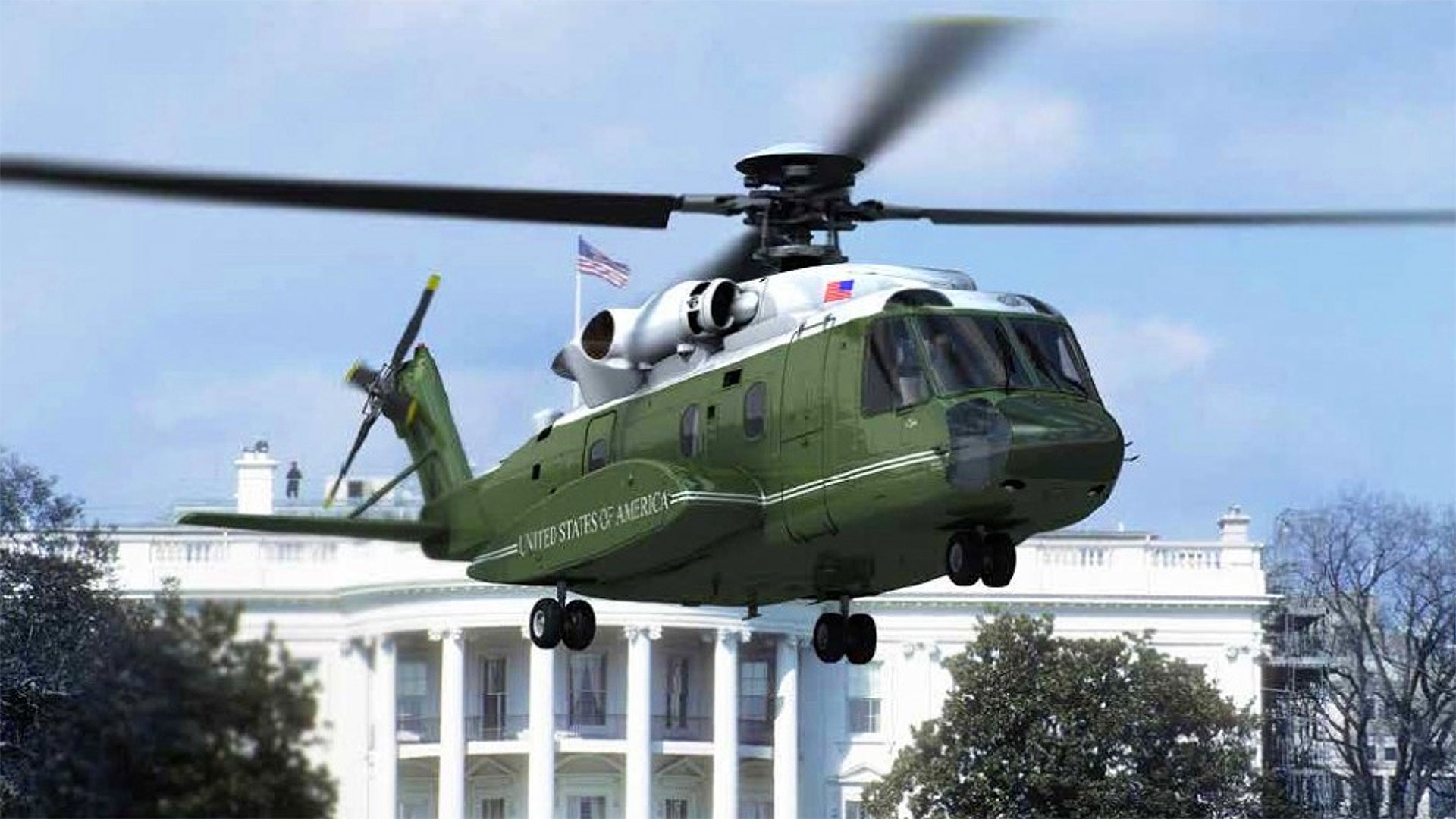The helicopter that will replace both the venerable VH-3D and VH-60N helicopters, referred to as Marine One when the President is onboard, has taken to the skies for the very first time. The VH-92A, which has been adapted from the Sikorsky S-92 Helibus, is slated to achieve initial operating capability in 2020, but before then it will have to go through a arduous series of flight and systems integration tests. The first of these flight test programs will total 250 hours and will occur at Lockheed’s facilities in Owego, New York. Lockheed has owned Sikorsky Helicopter since 2015.
Today’s inaugural flight took place at Sikorsky’s headquarters in Stratford, Connecticut. Actually two flights occurred today totaling one hour in duration. They included basic hover and slow-speed handling characteristics tests as well as a higher-speed pass over the airfield. Spencer Elani, the director of the VH-92A program at Sikorsky, said this following the flight:
“This first flight of the VH-92A configured test aircraft is an important milestone for the program. Having independently tested the aircraft’s components and subsystems, we are now moving forward to begin full aircraft system qualification via the flight test program.”

Another test aircraft will join the one flown today later in the year as part of Sikorsky’s six aircraft, $1.24B development contract with the Navy. The four others will be early production examples. A follow-on contract that is supposed to be executed in 2019 will include the remaining 17 aircraft that will make up the “White Top” presidential airlift fleet flown by HMX-1 out of Quantico, Virginia. The unit also flies MV-22 Ospreys, which are used for testing and tactics development, as well as moving around the White House staff and the press corps when the President is traveling.
Once turned over to the Pentagon after a 12 month flight test period, the VH-92As will be the first S-92 derivatives officially in the Pentagon’s inventory, although a handful of shadowy S-92s are leased to the US government for war zone operations. But that doesn’t mean the S-92 is a new design. The basic aircraft first flew in late 1998, and was deemed operational in 2004. Since then the type has flown over 1,000,000 hours. The aircraft has had its share of teething issues, but S-92s are flown by militaries and commercial operators around the globe, and is especially popular in the tough oil platform shuttle mission set and the VVIP transport role.

The news comes at a good time for Sikorsky, whose S-97 Raider propeller-driven compound helicopter had a hard landing at their Palm Beach test facility yesterday. A lot is riding on the basic technology behind the Raider as its larger cousin that is currently in development, the SB-1 Defiant, is going up primarily against Bell’s V-280 Valor for the initial Future Vertical Lift competition.
If the VH-92 gets successfully fielded, it will mark the end to a long and at times highly controversial path to replacing “Marine One.” I wrote the following last December at the height of President Trump’s Twitter war on prime aerospace contractors:
There’s no question requirement creep for this type of program can quickly get out of control. Case in point: The VH-71 Kestrel program that aimed to replace current VH-3D and VH-60N “Marine One” helicopters with the European-designed, triple-engined, and US assembled derivative of the EH-101. Things got so out of hand during the helicopter’s concurrent development process that each of the 23 helicopters was slated to cost over $550 million—more than three times the original eyebrow-raising estimate. The program was cancelled after billions were spent, and the nine aircraft in various stages of completion at the time of program’s termination were sold-off to Canada for a sickening $164 million to support their troubled Cormorant rescue helicopter program.
A new program is now underway to replace Marine One, this time with the twin-engined Sikorsky S-92 as the base platform. Even this less-ambitious endeavour may be fiscally unpalatable for President Elect Trump, at least at first glance. What’s interesting is that the VH-71 program was cancelled by President Obama, who made a very similar off-the-cuff quip about it shortly after being elected, stating:
“By the way, I’ve already talked to Gates about a thorough review of the helicopter situation. The helicopter I have now seems perfectly adequate to me.” He also added “It is an example of the procurement process gone amok, and we’re going to have to fix it.”

Now, as the Pentagon aims to reform its procurement practices, the VH-92A program will have to keep close to its schedule and cost projections in order to stay out of the President’s social media crosshairs. And this may not be an easy task as the helicopter will be stuffed with the most capable self protection and communications suites on the planet, among many other custom modifications ordered by the White House. All of it has to work together and in a safer manner than any other helicopter on the planet.
Contact the author: Tyler@thedrive.com
